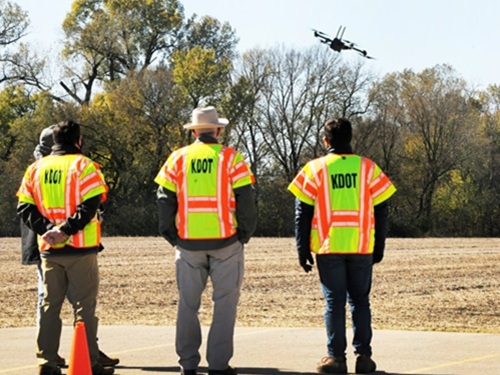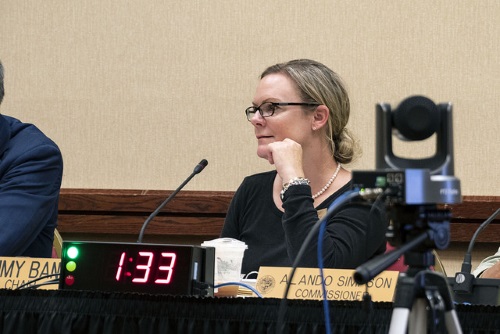The Federal Highway Administration outlined the federal requirements to implement tolls on interstate highways in a letter to the Oregon Transportation Commission and Oregon Department of Transportation on Jan. 8; a letter sent in response to their joint request to implement tolls on sections of Interstate 5 and Interstate 205 in order to manage traffic congestion and generate revenue for roadway improvements.
[Above: Tammy Baney, OTC chair. Photo by Oregon DOT.]
In the letter, FHWA noted that while additional project detail is needed prior to final approval, both projects are “likely eligible” under its Value Pricing Pilot Program.
The letter also provides the basis for Oregon DOT to move into the next phase of work on the project, clarifying FHWA tolling program and National Environmental Policy Act requirements it must meet in order to secure federal approval for tolling two sections of the interstate.

“This is a major step that will help us keep moving forward in what will be a long process,” said Tammy Baney, the OTC’s chair, in a statement. “In this letter, the FHWA acknowledges the work completed in our feasibility analysis and points us toward the next steps we need to take to use tolling in Oregon to help us maintain a transportation system that will meet our growing needs.”
The Oregon DOT added that the “next phase” in the tolling implementation process “is expected to take several years” due to the “rigor” of the necessary analysis and the extensive public engagement required. The agency said that process includes:
- Developing strategies to ensure that low-income and other historically underserved communities share in the benefits.
- Understanding the potential for further diversion onto neighborhood streets and developing strategies to keep the traffic on appropriate roadways.
- Exploring opportunities to improve transit and other transportation options, so that people have real choices for mobility if tolling is in place.
The FHWA also stressed in its letter that public outreach will be “critical” to the success of this tolling project.
“The FHWA cannot overemphasize the value of a transparent public involvement outreach and marketing effort to inform the region on the realities and myths of tolling, the issues the OTC/ODOT seeks to address, and the state’s vision for tolling in the region,” the agency said. “An aggressive public involvement, outreach and marketing effort serves to streamline the overall project delivery.”
 States
States
NCDOT to Rebuild I-40 with National Forest Rocks
June 27, 2025 States
States

